|
It is time to turn to the last page in my Bowling Blog. I just want to thank all of my readers for their interest and support, but unfortunately it is time to bid farewell. The demands of my work and family life are calling to me louder than ever before. So I must answer and and turn my full attention to my vocations and set aside my blogging for now.
I hope you have enjoyed it and learned a lot from what I have written here in my blog for the past year. It has always been my intention to share what knowledge I have learned in my 45+ years of bowling with you, and others like you who love the sport as much as I do. Hopefully I've helped you add more pins to your average and more smiles to your bowling outlook. If I have succeeded at this, then my Blog has been a success. Check out my Bowling Book on Amazon: https://www.amazon.com/dp/B09ZSMB99G/ref=sr_1_2?crid=P3PQWHFB1WYS&keywords=lets+rev+up+those+bowling+scores&qid=1652035291&sprefix=lets+rev+up+those+bowling+scores%2Caps%2C76&sr=8-2 Once again, thank you for being a part of my Blog Family and one last time, as always, I wish you GOOD LUCK and HIGH SCORING!!
1 Comment
The answer is YES, you can become a professional Bowler!! It will take lots of work, effort, money, and real dedication. But if there’s a will, there’s a way. The PBA is divided up into seven regions and depending on where you live will determine the region you'll be in. Pro bowlers can make anywhere from $100,000-$300,000+, and tournaments are where most of them make their big money. The richest bowler currently is Walter Ray Williams Jr.with almost 5 million dollars in winnings and 47 titles under his belt! There are specific guidelines and rules that must be followed according to the Pro Bowlers Association (PBA), and you must fulfill at least ONE of the following and be at least 18 years of age:
****A STANDARD MEMBERSHIP: * There is an Initiation Fee and a cost per year of $145+ (or a monthly fee if you don’t want to pay in one lump sum). * Allows you to bowl in THREE Regional Tournaments. * Allows you to bowl in THREE PBA Tour Qualifying Rounds (TQR-This is a tournament in which all NON-EXEMPT bowlers compete prior to a PBA Tour Event). * Includes a subscription to “Bowlers Journal International Magazine” * Letsyou receive a PBA Newsletter. * Gets you bowling discounts-$0-$2.00 games at official PBA Practice Centers. * Includes a free 14K Gold PBA Ring if you bowl your first 300 game during a PBA competition, and a diamond added for each 300 game bowled thereafter! ****A FULL MEMBERSHIP: * There is an Initiation Fee and a cost per year ($300+or a monthly fee if you don’t want to pay in one lump sum). * Gives you the same benefits as a Standard Membership. * Allows you to bowl in an UNLIMITED number of Regional Tournaments. * Allows you to bowl in an UNLIMITED number of PBA Tour Qualifying Rounds (TQR’s). * Allows you to bowl in ALL Senior Tour Events. * Allows you to have free advertising on a T-Shirt during competitions (if you have a business for example). * Gets you a free listing on www.PBA.com if you own a pro Shop. One of your goals as a Professional Bowler is to earn “EXEMPTIONS which will allow you to choose any PBA Tour Event that you want to compete in without having to play in the Tour Qualifying Round (TQR) and you’ll be guaranteed a spot for the season, or for the length of your Exemption which is 1-3 years. Tour Qualifying Round (TQR)- The PBA Tour Events have only a certain number of spots available to bowl, so the Exempt Bowlers will have first dibs on these, and the only spots still available will go to the WINNERS of the TQR. This TQR is a tournament before the real tournament. There are several ways to earn EXEMPTIONS on a PBA Tour:
*TOURNAMENT OF CHAMPIONS- worth 2 years of exemptions *USBC MASTERS- worth 2 years of Exemptions *PBA WORLD CHAMPIONSHIP- worth 2 years of Exemptions. 2. Win a “PBA TOUR STANDARD TITLE”- worth 1 year of exemptions. 3. Place in the previous seasons “WORLD POINT RANKING LIST” (minus those who already earned an exemption, up to a maximum of 42 bowlers)-worth 1 year of exemptions. 4. LEAD in the Non-Exempt members on the “WORLD POINT RANKING LIST” (among the bowlers who regularly bowl in the TQR)- worth 1 year of exemptions. 5. Finish in the top seven of the previous seasons “PBA REGIONAL PLAYERS INVITATIONAL”- worth 1 year of exemptions. 6. Resume a previous exemption after a medical or hardship deferment- the length is determined by the specific exemption you are resuming. 7. Receive a GOLDEN PARACHUTE EXEMPTION from the PBA which is awarded to the NON-EXEMPT player by PBA leadership-worth 1 year of exemptions. Each of the PBA Tour Events have entrance fees and you can go online to see exactly what these are since they change, and you can check out the schedules as well. They also award COMPETITION POINTS, depending on what place you finish in and which event it is. The major tournaments will earn you more points than some of the other events (Non-members cannot earn competition points). Prior to 2010, the player who racked up the most points became the PBA PLAYER OF THE YEAR. Today, this position is cast by voting. Your best shot is to win enough “TQR’s” to get into the tournament (to get an exemption), or to rack up the points depending on what place you finish in. Becoming a Professional Bowler will take a lot of work, concentration, perseverance, and practice. Most pros bowl at least 35-40 games before tournaments and have an average of at least 220. If you bowl exceptionally well (especially under pressure) and can really stay focused, then you can become a champ! If money is an issue, you can try finding yourself a SPONSOR that can pay entry fees for the tournaments that you can reimburse when you win. Or maybe a family member, good friend, or co-worker that has some extra cash lying around, may be willing to be your sponsor. If this is a dream of yours, I say GO FOR IT! You’ll never know unless you try and if you don’t try, you’ll never know if you could have been a great professional! If this has been one of your goals, I wish you GOOD LUCK & GREAT BOWLING! Join me back here again next week for my LAST BLOG POST. Good Luck and High Scoring!! Here are the good tips throughout my blog that I'm summing up for you to add into your notebook and to check on from time to time:
* Use a slightly weaker release---don’t use a lot of turn and lift which will cause to much hook. * If you can, increase your speed on the approach which will increase the ball speed and lessen the hook. 3. To help you READ the lanes more accurately: * Always start in your normal spot when league practice begins. I usually start on the 20th board which is the center of the lane, and adjust from there, to the right or left, but only by a few boards at a time. 4. Make sure you have a good GRIP on the ball. the thumb hole should be snug but not too tight so you can release the ball smoothly. Check tape in the thumb hole often since fingers can swell occasionally. 5. Have a relaxed swing, and one smooth movement. Let the ball go out (on the push away) and down naturally into a nice pendulum swing. Don't use a muscled swing. 6. Have a smooth Release like landing a plane on a runway. Don't let the ball crash down on the lane hard. It isn't good for the lane, your ball, and the ball will lose some of it's power by the time it hits the pins! 7. Have good balance on the release, don't be all over the place. Touch your back to insure good loft and hold the position until the ball hits the pins. Observe the ball and determine where it breaks. If you slow down, the breakpoint will begin sooner. Each lane is slightly different, so pay attention. I’ve been on pairs of lanes that had a 5 or more board difference where my stance and target were. When I was a beginner, it was confusing trying to remember everything and where to stand and what arrow to release the ball over, so I started writing it down on a piece of paper so I wouldn’t forget. I would make sure I glanced at that piece of paper just before it was my turn to bowl so I wouldn’t get confused about which lane I was bowling on, especially if I was talking to someone about something unrelated to the game. A beginner can get easily sidetracked and forget. 8. As the golfer makes the mistake of “looking up” before hitting the ball, don’t make the mistake of looking up at the pins immediately after the ball is released. Instead, keep your eyes fixed on the ball and the target so you know if it went over the correct board or arrow. After the ball passes the target, follow it's path though the pins to make sure that is correct. There will be plenty of time to watch the pins fall afterwards. 9.Learn to bowl each frame separately! Try and focus on good execution and do not get caught up on a frame if you had a poor shot. Just realize what you did wrong and move on. Remember when you’re worried or angry, you can’t focus on the frame coming up! 10. When you are bowling your first ball, aim from the foul line to the arrows, and when you’re going for spares, aim from the arrows to the pins. Spotting farther down the lane helps with accuracy. Join me back here next week when I'll be discussing "Can You Become A Professional Bowler"? Check out my book on Amazon: https://www.amazon.com/dp/B09ZSMB99G/ref=sr_1_2?crid=P3PQWHFB1WYS&keywords=lets+rev+up+those+bowling+scores&qid=1652035291&sprefix=lets+rev+up+those+bowling+scores%2Caps%2C76&sr=8-2 Good Luck and High Scoring! There are basically four types of BALL TRACKS. Before you start your next practice game, wipe your ball off really well with your towel and then bowl your first shot. When the ball returns, pick it up and observe the “Oil Track” on the ball to determine what kind you have.
2. FULL ROLLER- The oil track on this ball runs around the center of the ball and falls between the thumb and finger holes meaning it rolls over its' entire or FULL circumference. The bowler with this track gets a lot of mix on the pins. The hook isn’t as large as the person with the semi roller, and they don't use as much wrist turn or axis tilt when the ball is released as the bowler who has the semi roller track. With the newer resin balls, the full roller track isn't seen as much anymore. 3. SPINNER- You’ll notice the "LOW" track of the oil here is way down on the ball and only covers a small portion of the balls’ circumference. A bowler with this track doesn’t have as much pin mix or power as the previous two tracks, but is rolled with a lot of wrist turn when the ball is released. There isn’t much hook and the ball deflects more when it hits the pins. Instead of the fingers normally finishing on the right side of the ball (left side for the left handed bowlers), they finish more at the top of the ball. 4. FLARE- This type of ball track is newer since the more modern balls have been made. The ball moves off it’s initial track and ends up making a new track with each rotation of the ball as it travels down the lane. This means more of the cleaner surface of the ball is touching the lane which will equal a larger hook. (As you recall, oil cuts down on the hook). There are High Flare Balls and Low Flare Balls. High flare balls will hook more because a clean surface is happening with each rotation of the ball. Since less oil is actually getting on the ball, the hook will be larger. A Low Flare ball will hook less. If you'd like to know more about this, you can go online and research more of the technical aspects of Flare. The ball track will be able to show you how consistent you have been on releasing the ball, as long as the oil track is very close to the previous ones. If these oil rings are more than an inch apart, then you will need to work more on your consistency. After all, that is the name of the game! Join me back here next week when I'll be discussing "Can You Become A Professional Bowler"? Good Luck and High Scoring! I hope you are improving by now because t's been almost a year since I started my Bowling Blog and I've given you quite a bit of good information in that time. I hope you have gotten your own equipment and that you are in a faithful and regular exercise routine. Have you gotten a new ball and switched over to a Finger Tip Grip yet so you'll have a nice hook? Were you able to use a slightly heavier ball that can help you achieve more pin carry?
I am sure your average has improved if you have been adamant about getting practice sessions in outside of your league time. Have you gotten a coach? I hope your timing has improved. Remember to count your steps as you are walking. Always check the condition of your bowling ball grip. As you practice, check the feel of your grip. You want the grip to feel good, not too loose and not too tight. You need to be able to release the ball properly and finger fit is crucial! Don't forget to clean your ball! If there's a lot of dirt, oil, and debris on its' surface, it will not react the same! It may be time to get the ball resurfaced which will keep it performing the way it did when it was new. You can bring it into the pro shop and he can do that on a re-surfacing machine which will help prolong the life of the ball. Are you remembering to Follow Through and touch your hand on your back after the ball release to insure a good lift? Are you pulling the fingers toward the palm to insure good revs on the ball for more pin action? There's a lot to remember, so again, be patient with yourself and give yourself enough time to practice all of the important things you need to remember and incorporate into your game. Add them a few at a time because muscle memory takes time to build up. After awhile, you won't have to think about them and can focus more on reading the lanes and making your adjustments properly. Have you used some Visualization on some of the more difficult shots, meaning to keep a positive attitude and picture yourself converting the spare or getting the three strikes in the tenth frame to win that game for your team! If nothing else, keep an air of confidence about yourself and believe you are good and improving all the time. After your release, stay down and keep the release position until the ball hits the pins. You will look more professional that way. YOU CAN DO IT!! Join me back here again next week when I'll be discussing "What is a Bowling Ball Track"? Good Luck and High Scoring!! As previously mentioned, there are several oil patterns that are used around the country, some for PBA Bowlers and some for special tournaments. I have already mentioned several of the PBA Animal Patterns: Cheetah and Wolf Patterns which are 33 feet long, Viper-36 feet, Bear-39 feet, Chemeleon-39 feet, Dragon-45 feet, Scorpion-42 Feet, and the Shark Pattern which is 45 feet long. There are also Legend Patterns named after legendary Professional Bowlers. The Johnny Petraglia Pattern is 36 feet long, the Don Carter Pattern-39 feet, Don Johnson-40 feet, Earl Anthony-40 feet, Mark Roth-42 feet, Carmen Salvino-44 feet, and the Dick Weber pattern is 45 feet long. I'll discuss only a few of them and if you would like more information on specific patterns, please go online and you can get information and pictures of the other ones. I haven't had much experience on these Legend Patterns but wanted you to be aware of them in case you have the opportunity to bowl on any of them in the future. The Earl Anthony Pattern is named after one of the greats and my favorite bowler. Before his professional bowling career, he was a minor league baseball pitcher for the Baltimore Orioles. Earl Anthony was extremely famous and very popular during the 1970's through the 1990's. The guy was a lefty and extremely disciplined in his style, accuracy, and timing. It was like watching a machine bowl, he was so perfect and amazing! He earned 43 titles during his career, was player of the year six times, and he got into the PBA Hall of Fame in 1981. He was the first professional bowler to earn over one million dollars and had 25-300 games (none on TV unfortunately). Sports Illustrated magazine named him the second greatest athlete in history in the state of Washington (the first was the NBA star, John Stockton). My husband was bowling in a tournament long ago, and we both got to meet Earl Anthony. We had a chance to chat for a few minutes and even got his autograph, he was such a nice fellow. Unfortunately, in 2001 he fell down a flight of stairs visiting a friends home in Wisconsin and died at only 63 years of age. The Earl Anthony pattern is about 40-43 feet long, and instead of the oil narrowing, it gets wider closer to the pin deck, which forces the bowler to make shots from a variety of angles. Right handed bowlers should play a deeper tighter inside line, and the lefty's have a slight advantage because Earl was a lefty. The oil is heavy on the first fifteen feet, dryer 15 feet-29 feet, then oily again to the end of the pattern. The darker the color, the heavier the oil. Mark Roth was also a very famous Professional Bowler in the late 1970's-2000's. He won 34 PBA titles, and 8 of them just in 1978, giving him the record for the most won in a single season! He was the first pro bowler to pick up the dreaded 7-10 split on national television on Jan 5, 1980 which I was able to watch, pretty awesome indeed! I was so excited when he converted that monster! He was also known for his unusual 6 step delivery and Cranker Style. I got to meet him in person and even made him a cheese sandwich in the deli I worked in, in Brooklyn NY. Bob Simonelli had a pro shop on 50th and 7th ave and some of the pros would occasionally come into our deli for sandwiches. This pattern is about 42-46 feet long. It has a lower volume of oil than some of the other patterns and was originally designed for plastic balls which were more popular back during Roth's prime.The right handed bowler should try to stay to the right since most of the oil is in the center and front part of the lane, so the higher friction area (hooking area) will be to the outside of the lane. As the pattern breaks down, the bowler needs to move left to keep getting a bit more oil. Don't use a ball that is very aggressive on this pattern. Lefties should stay to the left as long as possible and can move slightly to the right but not too far, otherwise they will be bowling in the area where the righties are playing, and the pattern will be broken down quickly. Instead, try to change your speed or the target you are using. The Dick Weber Oil Pattern was named after one of the most famous professional bowlers, Dick Weber. He was very popular during the late 1950's through the early 2000's. He was one of the original founding members of the Pro Bowlers Association (PBA), has won 30 PBA titles, 6 titles in the PBA's Senior Tour, and is considered a pioneer in the sport of bowling.He is a member of the ABC and PBA Hall of Fames. You may have seen his son Pete Weber on TV who is also considered one of the top bowlers out there. The pattern is about 45 feet long and is constantly changing so you will need to make larger adjustments. Just remember, the longer the oil pattern is, the less the ball is going to hook, and in most cases you can usually play closer to the outside part of the lane where it's drier so the ball can hook. When there's a lot of oil, you can use straighter shots or the ball will just end up skidding. Remember, the ball needs to be in the rolling phase for the strike to happen more often. When there is less oil on the lane, the ball will hook more, so you want to speed up the ball if you can to cut down on the hook. Playing on these patterns in tournaments will help you get more experience, and taking notes will help you understand them better. Also remember NOT TO PANIC if you can't figure out the lanes. Try to find someone you're bowling with that has a similar style to yours and observe what they're doing so you can get some idea of where to stand and what target to aim for. YOU CAN DO IT!! Join me back here again next week when I'll be doing another Checkpoint! Check out my book on Amazon: https://www.amazon.com/dp/B09ZSMB99G/ref=sr_1_2?crid=P3PQWHFB1WYS&keywords=lets+rev+up+those+bowling+scores&qid=1652035291&sprefix=lets+rev+up+those+bowling+scores%2Caps%2C76&sr=8-2 Good Luck and High Scoring!! First let me give you a bit of history and how things were done years ago. A bowling establishment hired "Pin Boys" to manually set up the pins, pick up any pins to get them out of the way for the second shot, and return the balls to the bowlers. They made about ten cents a game and about $2.00 on a busy night. There are still a few bowling centers today that have pin boys, believe it or not. This was the case until a man named Gottfried Schmidt invented a machine called the "Pinspotter" in 1936 while being employed with the AMF firm. Then in 1941, he ended up selling the patent to AMF, paving the way for newer and updated pinsetting machines. These pin setting machines were invented around 1963 but now there are computerized machines that have various SENSORS in them. These Sensors can detect the bowling ball as it approaches the pins. Once the ball knocks down the pins, a gate comes down called the "SWEEP". It protects the remaining pins while a "PIN TABLE" is lowered onto the pins that remain, picks them up, and then sweeps the downed pins (called Deadwood) off the pin deck. The pin table counts the number pf pins that remain standing and sends that information to the computer that keeps track of your score. The ball's impact is stopped by the "BALL CUSHION ASSEMBLY" which has enough space for the pins to go through but not the ball. Once the deadwood is cleared off of the pin deck, those pins and the bowling ball are transported onto a conveyor belt below. The ball pit also has a sensor that opens the ball door a few seconds after the pins have been cleared off of the conveyor belt. This area has a BALL ACCELERATOR which pushes the ball along a track under the lane and is what brings the ball back to the ball return. Once the pins are cleared off the conveyor belt, they are taken up separately to the pinsetter by a little elevator that has slots or shelves holding each pin in place. These slots tilt to push the pins off and each pin hits a PIN COUNT SWITCH so only ten pins go into the Distributor. The pins are guided on tracks that have little SHARK FINS that guide the pins to the right or left side of the machine. There are TURN WEDGES that turn the pins so their bottom is always facing downwards. Each pin is then sent to a PIN STATION, and once all ten pins are set and extra pins go into the OVERFLOW CHUTE and back down to the conveyor belt and back up to the elevator. Each pin setting machine can hold up to 20 bowling pins so they can get into the slots and back into the pin table quickly when you hit the re-set button by the ball return. If you want to see a pin setting machine in action, you can go online and watch a Youtube video if you'd like. I just thought it was interesting to see how the pins actually got set up so quickly and thought you might enjoy this as well. Don't forget to check before throwing your first shot, that all ten are up there and that the rows look even. Sometimes pinsetters can be off slightly and only put 9 pins up there. Once you throw the ball, if you notice all ten pins were not up there, it will be too late and it could cost you a strike. I f a pin is missing or something doesn't look right on the pin deck to you, you are allowed to have a re-rack. Just hit the re-set button. Join me back here again next week when I'll be discussing some of the other Oil Patterns used in Bowling. As always, Good Luck and High Scoring!! How annoying is it, knowing that you threw what you thought to be a beautiful shot and see a 7 or 10 pin staring back at you or even a dreaded split? Well you're not alone because it happens to the best of us and can be downright frustrating! Bowling is a game of angles and even though you thought you threw a great shot, there is a reason the strike did not carry. If you feel like you’ve been getting robbed a lot, try not to get too angry because you’ll only do worse. Here is a photo of the path the bowling ball should take as it hits the pocket and makes its' way through the pin deck. Remember to use you eyes to follow that path: When you hit the pocket, you may hit it LIGHT or HIGH. A LIGHT hit means that you hit the 1 pin more on the right side so the 3 pin hits into the 10 pin and the ball exits the pin deck slightly to the right of the 9 pin slot, instead of going between the 8 and 9 pin slot as shown in the photo above. So if you see this happening, you need to adjust by moving back a bit on the lane or slightly right to hit the pocket more solidly. A HIGH hit means that the you hit the headpin in the center making it go more directly into the 5 pin and the ball is exiting the pin deck at the 8 pin slot. If you see this is happening, then move slightly left on the lane or forward. Keep the target the same for light or high hits. The key here is to try and get a more SOLID hit into the 1-3 pocket area to have the ball follow the path above in the photo. It's also more beneficial for you to throw a shot that hooks to increase the entry angle into the pocket and have less pin deflection. When I’m having trouble with that strike zone, I also have a few questions I’ll ask myself to help me figure out what went wrong: 1. HOW’S MY PHYSICAL STATE?- Am I tired? Being tired can cause you to walk somewhat slower than normal and that will make the ball hook sooner causing it to come up higher on the head pin. Do your best to try and keep the same speed throughout the evening.Get some coffee or a snack to help you stay alert. If you feel stiff at all, maybe stay standing up in between your turn instead of sitting down. Little things can make a difference. 2. AM I FOCUSING? – It can be difficult to stay totally focused for three games sometimes, especially if you’re a fairly new bowler. There can be many distractions when you’re in a league such as noise, team members wanting to chat, getting the money into the envelope, watching for people getting up to bowl to your right and left, or getting into a pot to see who can get the highest game, etc. (I try to take care of some of these things immediately following the practice session so I can start focusing on my game as soon as possible). 3. AM I ON THE CORRECT BOARD?- Some bowling centers have five dots across the lane, and others have seven, each representing five boards on the lane. Make sure you look down at your feet each time you bowl, especially if you’re at a different center for a tournament or in another league. Don’t let the extra two dots get you confused, or you might be standing in the wrong place. A board or two off at the stance does make a difference where the ball ends up at the pins! 4. HOW IS MY STANCE?- Normally you should be standing straight with your knees slightly bent, and eyes focused on the target. But if you’re tired for example, the ball will begin to feel heavier and may cause you to slouch. Try to be aware of this and straighten the back up again. Believe it or not, these little differences can and will affect your shot. 5. HOW’S MY TIMING?- Timing is crucial and the arm and steps should feel natural and in sync for the best results. If your footwork or arm swing is delayed a bit, then try counting your steps like I previously mentioned. This will help keep your rhythm and timing good. 6. HOW’S MY SPEED?- As I previously said, your physical state can affect your speed. If you’re excited about something when you arrive to the lanes, you may end up going too fast and the ball may not have a chance to hook and do its job. Having coffee or chocolate close to when I'm bowling affects my speed because both have caffeine, so I do my best to avoid them when I'll be bowling and you should also if caffeine bothers you. To help slow down a bit, you can lower the ball at the stance or lower your back swing to help slow down the speed of the ball (To increase ball speed, have a higher backswing by bending down more, or hold the ball up a little higher at the stance). 7. AM I FOLLOWING THROUGH?- After you release the ball, be sure that you continue to bring your arm up comfortably to at least shoulder level or higher for a good follow through. Remembering to touch your back after each release will help insure a good follow through for consistency. Sometimes if you keep using the same line, it will get stale. try throwing from a different angle and you may be able to hit the pocket more often and carry all ten pins. Sometimes we have to shake things up a little in order to get better results! Join me again next week when I'll be discussing How Does A Pinsetter Work? Good Luck and High Scoring!! Happy New Year to everyone!! I hope you enjoyed the holidays and all the festivities as much as I did!!
Many of you have some New Years Resolutions just as I do. I hope you will be able to "FOLLOW THROUGH" on all or most of them. Here are a few you may want to include in 2023, if you haven't already, as far as Bowling is concerned!! 1. Learn to bowl with a hook if you haven't and are still throwing a straight ball. Your average will go up more quickly! 2. Being a better Team Member instead of just bowling your own game. 3. Losing a few pounds and doing more exercising so you can get more stamina and bowl great that last game instead of being tired. 4. Remember to clean your bowling ball/s after each league session is over so you won't have to when you are starting a your next bowling session. 5. Change from a Conventional Grip to a Finger Tip Grip. 6. Really getting to the lanes and practicing more often, and working on something specific instead of just competing with the person next to you. 7. Remember to do stretching before you begin any bowling session. 8. Really focusing on getting a better first ball, 9 or better! You'll never have to worry about chopping a one pin spare and you'll always get great pin count on your spares!! 9. Buying a new ball or new shoes. 10. Bowling your first 300 game! 11. Get in a good bowling routine, doing everything in order and having a positive mental attitude. 12. Start signing up for some tournaments! Don't put it off. You will get a handicap so it doesn't matter if your not that good yet. Getting the experience in tournaments and bowling with people who are more skilled than you will definitely help you improve!! These are just some ideas to start with. I am sure you have others that you wish to accomplish and incorporate into your bowling game. You have a brand new start with the NEW YEAR ahead of you. today is only January 3. Just think it, picture it, and go out and DO IT!! You know you can! Confidence and consistency is the name of the game!!! Join me back here next week when I'll be discussing "Why am I hitting the pocket, but not getting the strike"? Good Luck and High Scoring, and Let's get revved up for this brand new year! This is the 6th professional oil pattern being discussed. The PBA Badger Pattern is the longest of the patterns at a whopping 52 feet, leaving only 10 feet for the ball the roll into the desired 1-3 pocket (1-2 for the lefty's).
Here are some pointers on how to play this pattern: 1. You need to keep the breakpoint (the point at which the ball begins to hook) closer to the pocket because of the higher volume of oil, so use a tighter line, meaning to play a more direct line into the pocket. Try laying the ball down around the 15th board to start and it can hook that last 2 1/2 boards to come into the pocket. 2. Speed control is important, so don't throw the ball too fast or your ball will skid into the pocket. Remember, to get a strike the ball needs to be in it's rolling phase on board 17 1/2 for best results! 3. If your ball hooks too early, the power will fade out by the time it hits the pocket and you won't get much pin action. 4. Play more in line with the pocket area on these longer oil patterns when it's fresh, then you can start making adjustments as the pattern begins to break down. 5. Accuracy is important to scoring well. If you miss the mark by more than a board, you may end up with a split or not coming up into the pocket area at all. 6. Focus on being consistent with hitting your target, especially early on. 7. A stronger ball is going to hook too early. It's better to use a weaker or lesser hooking ball if you have one in your bag, to conserve the balls' energy and get a better entry angle into the pocket since there's only about 8" of dry lane. Good luck and have fun practicing this one if you get a chance. Remember to take notes in your notebook as your'e playing on it, so you can refer to them if you get another chance to play on this pattern. Join me back here again in TWO WEEKS (but on Jan 3, because I'll be on the road traveling) when I'll be discussing Why the Strike May Not Be Carrying for you. Good Luck and High Scoring!! HAPPY HOLIDAYS TO YOU AND YOUR FAMILY!!! |
AuthorHello!! My name is Joanie. Although I'm not a professional bowler, I have loved the sport for more than 45 years, averaged over 200 for several seasons, and learned quite a bit with research and experience. Archives
February 2023
Categories |
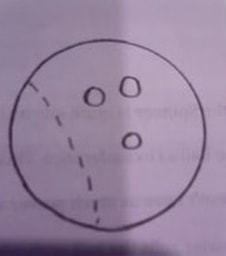
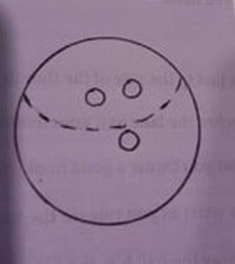
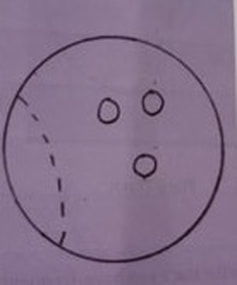

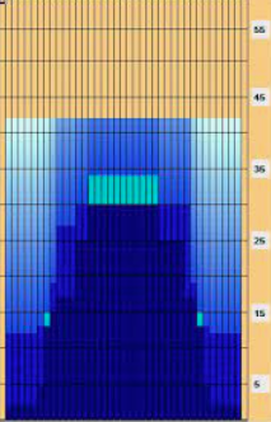
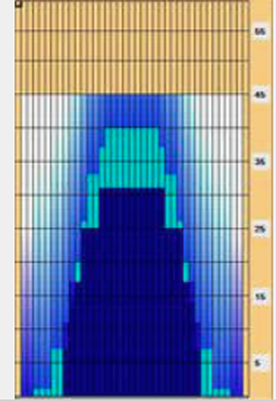
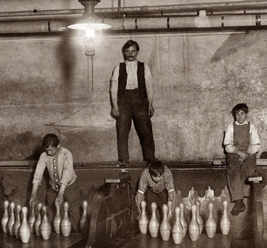
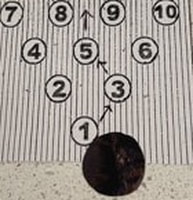
 RSS Feed
RSS Feed